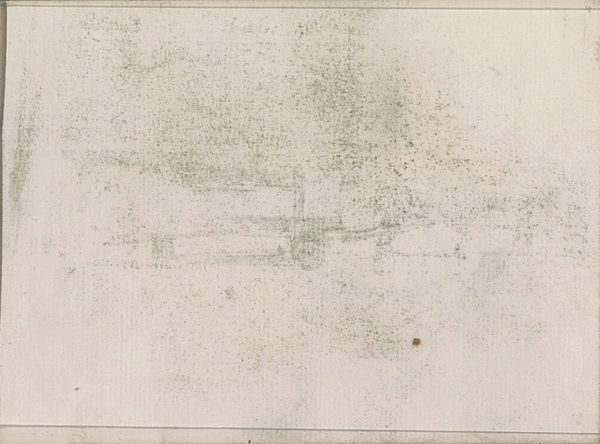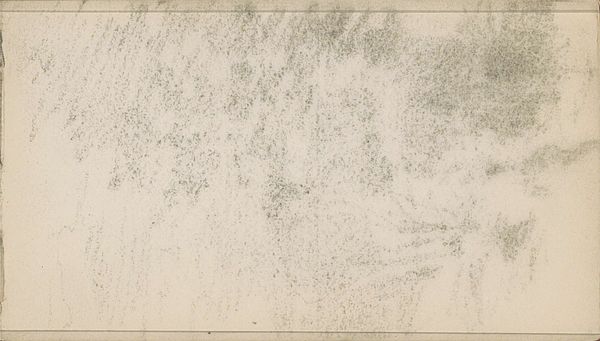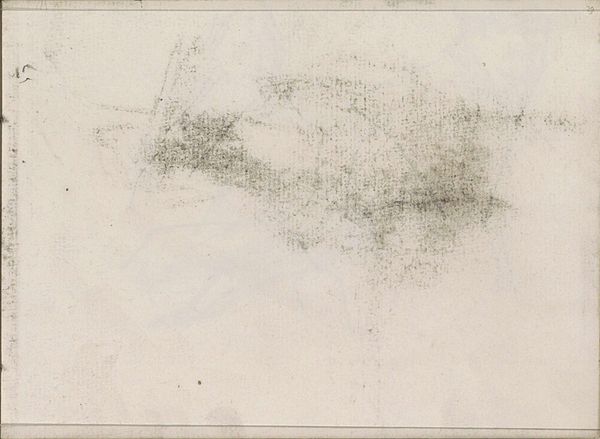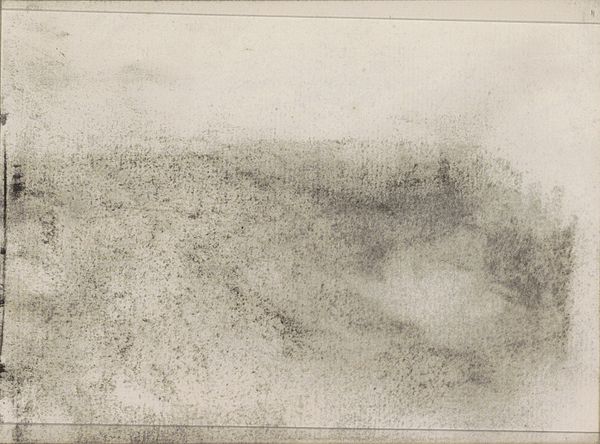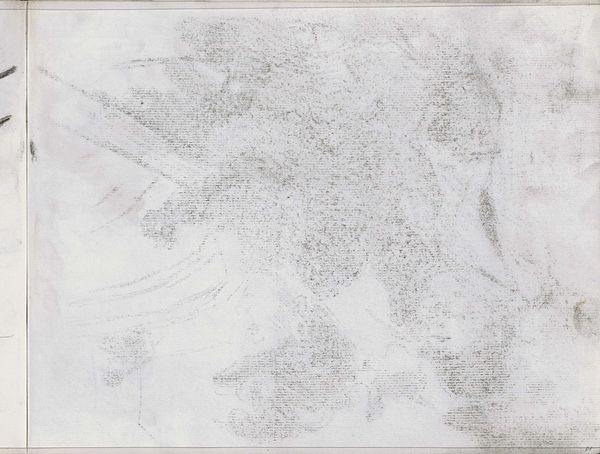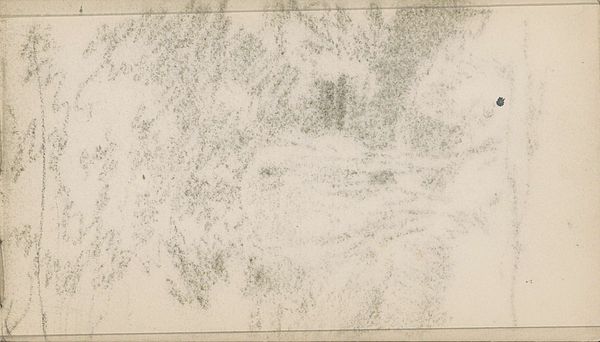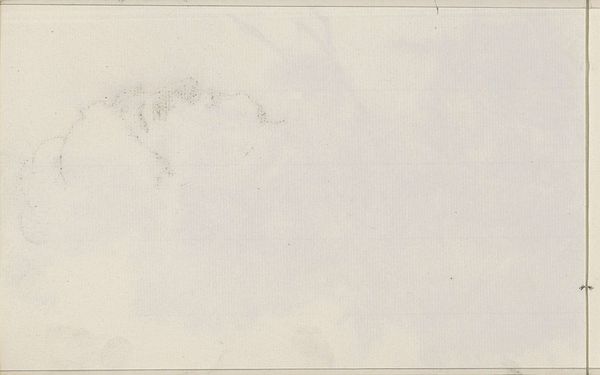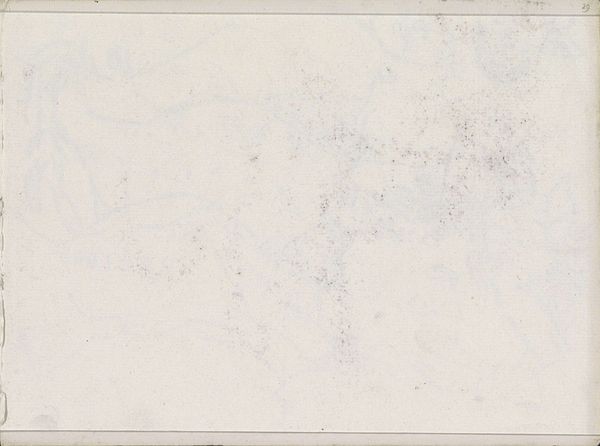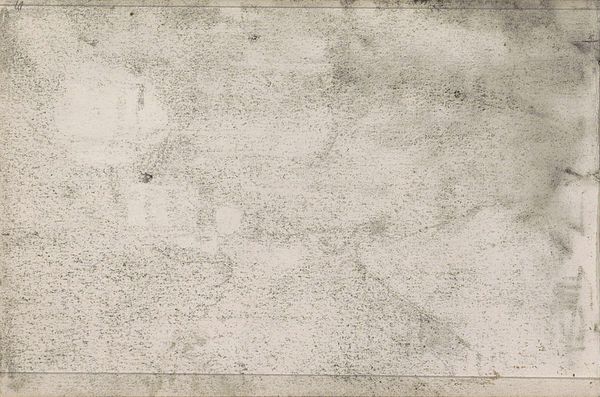
Copyright: Rijks Museum: Open Domain
Curator: So, here we have a work titled "Abklatsch van de krijttekening op blad 10 recto" – a rather intriguing name – by Isaac Israels, created sometime between 1875 and 1934. It's a drawing done with graphite on paper, currently residing in the Rijksmuseum. What are your initial thoughts on it? Editor: Ethereal, almost dreamlike. It feels like looking at a landscape fading into mist, or perhaps a memory just beyond reach. The stark contrast against the paper creates such a poignant mood, wouldn’t you agree? Curator: Indeed. The title itself hints at its creation - an 'Abklatsch', a kind of impression or transfer of a chalk drawing, which might explain that ethereal quality. Israels was working within Impressionist circles, where capturing fleeting moments and sensory impressions was key. Editor: It feels profoundly abstract, doesn't it? But that's what captivates me! I see…energy! Swirling forms like unseen forces. It makes me think of how impermanent art truly is, existing briefly and shifting over time through culture. Curator: Well, historically Israels engaged with landscapes to a degree, but not in the traditional romantic or realist styles of the 19th century, opting instead for that focus on pure optical sensations, and often using it to address specific cultural changes happening at that moment. His subject and choice of impression here allows the artwork to challenge conventions. Editor: Maybe I'm being dramatic, but it speaks volumes about decay and creation! And I mean both personally and universally. It invites endless interpretation—like a Rorschach test made elegant. I wonder what sort of political dialogue Israels’ abstraction creates? Curator: I think that interpretation captures how art evolves to challenge the role it plays to society itself! From art’s accessibility to whom the institutions represent! Overall, this piece reflects how Israels was testing the limits of representation, perhaps questioning what drawing could be in a rapidly changing world. Editor: Absolutely! It leaves me with this lingering sense of contemplation – not just about the drawing itself, but also about the nature of seeing, perceiving, and remembering. Thanks for this insightful talk!
Comments
No comments
Be the first to comment and join the conversation on the ultimate creative platform.

